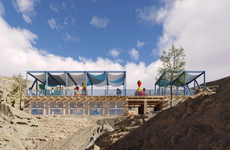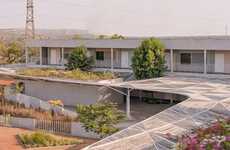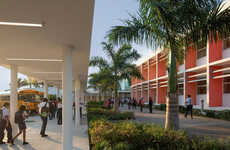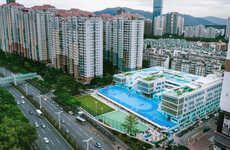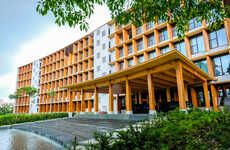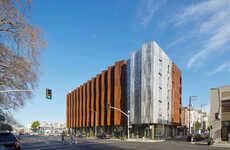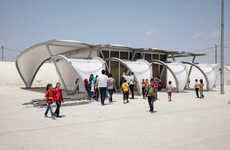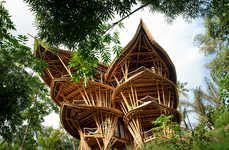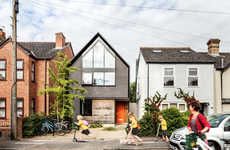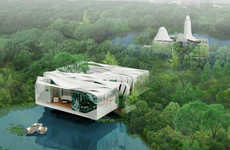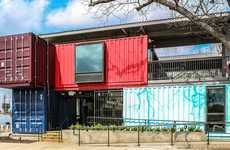
This Innovative School Building Was Designed by MAT-TER
Rahul Kalvapalle — May 6, 2014 — Eco
California design studio MAT-TER designed this modular, typhoon-resistant passively-cooled school building, which is set to be constructed in the Philippines later this year.
The primary building material will be local bamboo, with the floors, walls and furniture all utilizing bamboo materials. MAT-TER envisions the planting of bamboo all around the school plot, to provide resources for maintenance and repair while acting as a wind-screen to shelter the school from heavy winds.
The school will sit on large concrete stilts, protecting it from flooding and allowing for increased ventilation. The school's facade will be fitted with ventilation screens, while its roof will be equipped with a rainwater harvesting system.
The design was conceived during a competition to reconstruct the Guiuan National High School, which was destroyed by Typhoon Haiyan along with 4,500 other schools in the other area.
The primary building material will be local bamboo, with the floors, walls and furniture all utilizing bamboo materials. MAT-TER envisions the planting of bamboo all around the school plot, to provide resources for maintenance and repair while acting as a wind-screen to shelter the school from heavy winds.
The school will sit on large concrete stilts, protecting it from flooding and allowing for increased ventilation. The school's facade will be fitted with ventilation screens, while its roof will be equipped with a rainwater harvesting system.
The design was conceived during a competition to reconstruct the Guiuan National High School, which was destroyed by Typhoon Haiyan along with 4,500 other schools in the other area.
Trend Themes
1. Modular Construction - The use of modular construction in typhoon-prone areas can lead to more efficient and standardized building practices.
2. Sustainable Materials - Using locally-sourced, sustainable materials like bamboo can create resilient and eco-friendly structures in disaster-prone regions.
3. Passive Cooling Systems - Incorporating passive cooling systems into building designs can reduce energy consumption and increase comfort levels for occupants.
Industry Implications
1. Construction - Innovative designs and materials can disrupt traditional methods in the construction industry in disaster-prone regions.
2. Architecture - Architects can introduce disruptive innovations in the use of sustainable materials, passive cooling systems, and modular construction in areas susceptible to natural disasters.
3. Education - New designs and innovations for school buildings can improve safety and comfort for students and teachers in disaster-prone regions.
5.1
Score
Popularity
Activity
Freshness


